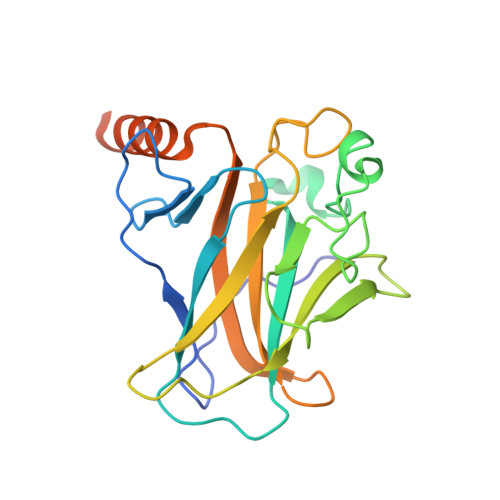Aminobenzothiazole derivatives stabilize the thermolabile p53 cancer mutant Y220C and show anticancer activity in p53-Y220C cell lines.
Baud, M.G.J., Bauer, M.R., Verduci, L., Dingler, F.A., Patel, K.J., Horil Roy, D., Joerger, A.C., Fersht, A.R.(2018) Eur J Med Chem 152: 101-114
- PubMed: 29702446
- DOI: https://doi.org/10.1016/j.ejmech.2018.04.035
- Primary Citation of Related Structures:
5O1A, 5O1B, 5O1C, 5O1D, 5O1E, 5O1F, 5O1G, 5O1H, 5O1I - PubMed Abstract:
Many cancers have the tumor suppressor p53 inactivated by mutation, making reactivation of mutant p53 with small molecules a promising strategy for the development of novel anticancer therapeutics. The oncogenic p53 mutation Y220C, which accounts for approximately 100,000 cancer cases per year, creates an extended surface crevice in the DNA-binding domain, which destabilizes p53 and causes denaturation and aggregation. Here, we describe the structure-guided design of a novel class of small-molecule Y220C stabilizers and the challenging synthetic routes developed in the process. The synthesized chemical probe MB710, an aminobenzothiazole derivative, binds tightly to the Y220C pocket and stabilizes p53-Y220C in vitro. MB725, an ethylamide analogue of MB710, induced selective viability reduction in several p53-Y220C cancer cell lines while being well tolerated in control cell lines. Reduction of viability correlated with increased and selective transcription of p53 target genes such as BTG2, p21, PUMA, FAS, TNF, and TNFRSF10B, which promote apoptosis and cell cycle arrest, suggesting compound-mediated transcriptional activation of the Y220C mutant. Our data provide a framework for the development of a class of potent, non-toxic compounds for reactivating the Y220C mutant in anticancer therapy.
Organizational Affiliation:
Medical Research Council, Laboratory of Molecular Biology, Francis Crick Avenue, Cambridge, CB2 0QH, United Kingdom; Chemistry, Faculty of Natural and Environmental Sciences, University of Southampton, Southampton, SO17 1BJ, UK. Electronic address: m.baud@soton.ac.uk.

















